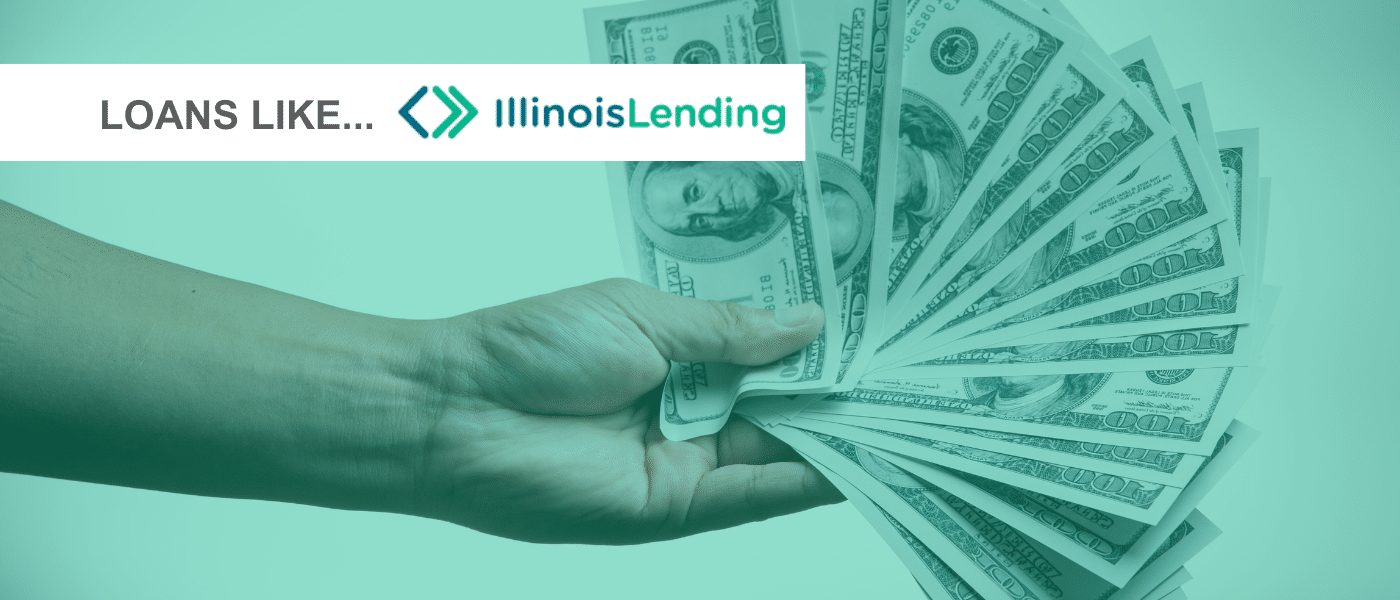Consumers that need money quickly typically apply for a loan. But there are high-value items you can sell to make money, such as vehicles. Motor vehicles are a valuable asset that can help drivers earn a substantial amount of money. But if you still have a loan on your car, you may want an answer to the question, “How to sell a car with a loan?”
Keep reading to learn how to sell a car with an auto loan on it and some alternative loan options you may use to avoid selling.
Can You Sell a Car With an Existing Loan?
It is possible for car owners to sell their vehicles with an existing loan. Take a look at the different ways to earn money through a financed car sale:
- Repay the outstanding loan balance.
- Sell the car to a private party.
- Sell the car to a dealer.
- Trade-in the car at a dealership.
Keep in mind that your remaining loan balance, equity, and other factors will determine how you are able to sell your vehicle. You will still have to repay the remaining balance on your loan. If your car is older or has damage, the sales price may not be high enough to cover the outstanding balance of the car loan.
Information Required To Sell a Vehicle With a Car Loan
In order to sell a vehicle with a car loan, you need to acquire important information first. Here is the information you will need to sell a vehicle with a car loan:
The Loan Balance
It’s critical to know the loan payoff amount of the financed car. A lien on the car title proves that the lender owns the vehicle. You may not transfer the title or sell the car until the loan is repaid in full.
Many borrowers receive monthly statements from their lenders, but the current balance on that document may not be accurate. The payoff amount may actually be higher than your remaining balance due to interest fees, prepayment penalties, and other hidden fees. Speak to your lender directly to get an accurate, current car loan balance.
The Value of the Car
Knowing the current market value of your vehicle can help you prevent underselling. Luckily, both dealerships and private buyers are always interested in used cars, so you may be able to complete a sale. You can find out the current purchase price of your automobile by going directly to a dealership or getting an online appraisal.
A reliable source for instant car values is the Kelley Blue Book. Since the 1920s, the Kelley Blue Book has been a standard within the automotive industry. By submitting contact information and a few details about your car, you can find out what it’s currently worth.
To get an accurate estimate, you will need to provide the following information:
- Your Vehicle Identification Number (VIN).
- Your license plate.
- The make and model.
- The current mileage.
- The year of manufacture.
- The style of the car.
- The type of equipment.
- The color of the vehicle.
The Equity in the Car
Equity is the difference between your auto loan’s balance and your car’s current value. A vehicle can have positive or negative equity. When the car is worth less than you owe, you are upside down on the loan and have negative equity. But if the value exceeds your outstanding loan balance, you have positive equity. Suppose your car is worth $6,000, but you still owe $2,000 to the lender. In that case, your vehicle has positive equity equal to $4,000.
How to Trade in a Car You Owe Money On
Trading in your car at a dealership is a more straightforward process than selling because the dealer typically handles the paperwork. If the vehicle is worth more than you owe to the lender, you can receive credit towards the purchase of a used or new car.
However, if your car is old or damaged, it may not be valuable. But you may still be able to upgrade your vehicle despite being upside down on an auto loan. The dealer may offer to include your outstanding balance in your new car loan. Keep in mind that rolling over your previous loan balance may result in a higher loan that is equally challenging to pay off.
To avoid financial issues down the line, consider replacing your current car with a similar one of equal value. While upgrading to a pricey luxury vehicle is tempting, remember you will end up with a substantial loan balance. Ensure you check your current credit score to better understand what type of interest rate you may acquire. Lower scores may get high-rate offers, which will result in high monthly payments. Consider whether you can afford to pay off a super nice car for several months or years.
How To Sell Your Financed Car to a Dealer
You will need to drive your car to a dealership to get an appraisal. The dealer will take your vehicle details into account and do an inspection to check for scratches, dents, peeling paint, and other types of damage. You may then get a purchase offer once the inspection process is complete.
To get as much money as possible, preparing the vehicle ahead of time is a good idea. A dirty, poorly maintained vehicle will always be less valuable than a clean one that runs well. Most lenders offer free appraisals, so take advantage and get multiple offers to get the most money through the sale.
These tips can help you get the most value for your car during an appraisal:
- Wash and wax the car’s exterior
- Vacuum the interior and get rid of any trash.
- Fix any minor issues (non-working lights, low air, small dents, etc.)
- Check all fluid levels (washer fluid, coolant, etc.)
- Gather important documents (service records, registration, etc.)
Selling your vehicle to a dealership is a more straightforward process than selling your car privately because the dealer will generally handle all the paperwork. The dealer will call the lender directly to verify the loan payoff amount. If your vehicle has positive equity, you may walk away with money in your pocket. But you will have to pay the difference to the lender if your car has negative equity.
How To Sell Your Financed Car to a Private Party
You can sell your financed car through a private party sale. However, you will be responsible for ensuring the paperwork is in order. Talk to your lender to get your payoff quote and learn what documents you need to transfer ownership of the vehicle.
Most states require the lienholder to hold the car title for the duration of the repayment process. If your lender has possession of the title, then you reside in a non-title-holding state. But if you live in a title-holding state, you likely have the vehicle title with the lienholder’s name.
A lien on the car title grants ownership to the lender in case of default. To transfer the car title to a private buyer, you must first provide the lender with the payoff amount in full. Once the financial institution receives payment, they can direct you on how to correctly handle the transaction.
If you live in a non-title holding state, your lender will remove the lien and release the vehicle title to you. But if you reside in a title-holding state, you will receive a vehicle lien release form. Some states participate in an electronic lien and title program, in which case your title gets released electronically. Owners receiving a car title lien release form must visit their local Bureau of Motor Vehicles (BMV) or the Department of Motor Vehicles (DMV) to request a new car title.
Remember that it may be hard to sell a car with an existing lien on it to a private party. Many people may be unwilling or wary of buying a financed car. Usually, buyers will check for liens on a car before they purchase it. The car title transfer process can take weeks, which may not work with the new buyer’s schedule. You may have better luck selling the vehicle to a dealership, although you may not get as much money for your used car.
Alternatives To Selling Your Financed Car
If you need money to afford the cost of unexpected expenses, you may ask yourself, “Should I sell my car or keep it?” Selling such a valuable asset can potentially help you get thousands of dollars. But if you only have access to one vehicle and it serves as your only mode of transportation, know there are alternative options. Learn what steps you can take to get quick cash before going through the process of finding a buyer.
Take Out a Personal Loan
Personal loans provide small to large lump sums very quickly. Typically, you can apply for as little as $100 and as much as a few thousand. Many lenders are able to disperse funds the same day you apply, so you can get money exactly when you need it.
The qualification requirements vary per lender, but many offer flexibility. Getting as much as $5,000 with bad credit is possible. Inquire with multiple lenders to find the most affordable loan offer.
Refinance the Auto Loan
Refinancing a loan is the process of replacing your current loan agreement with a new one. A loan refinance can help borrowers potentially get a lower interest rate. A lower rate can help you save money each month, allowing you to pay off your loan much sooner. Borrowers can refinance with an existing lender or a new one.
Lower monthly payments may incentivize you to speed up the repayment schedule of your loan. But ensure your auto lender does not charge prepayment penalties before you start making additional loan payments. A prepayment penalty is a fee for paying a portion or the entirety of your loan early. Early payment means the lender loses out on additional compensation, so some charge penalty fees.
Use Your Savings
If you have an emergency fund, using your savings to pay for unforeseen expenses may be a good idea. Using your savings can help you avoid selling a reliable mode of transportation and going through the hassle of finding a buyer. But using an emergency fund should only be an option if you will still have enough money left over to afford additional unexpected costs in the near future.
And if you need more info on loans and cars, like how to check for liens on a car, check out the rest of the CreditNinja Dojo!
References:
How to Sell Your Car When You Still Have a Loan│U.S. News & World Report
How To Sell A Car With An Existing Loan│Forbes
How do you get a lien removed from a car title?│Progressive







